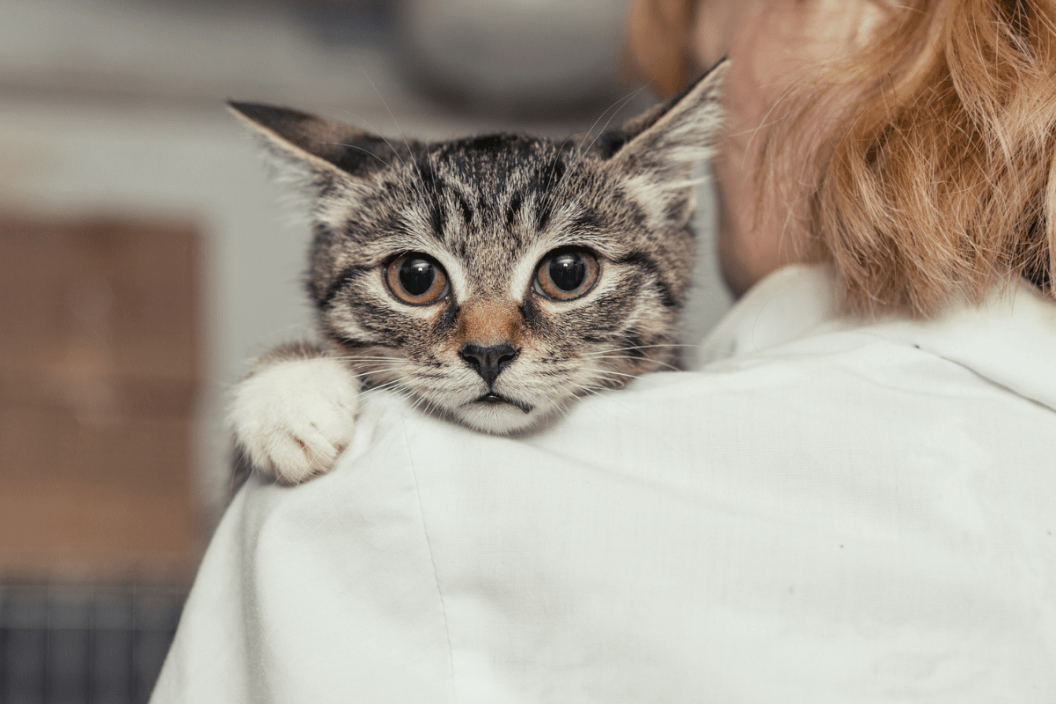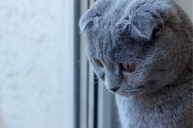When cats vomit, it's tempting to just ignore the problem. After all, hairballs are a common occurrence, and sometimes benign things like overeating can cause this common ailment. But if your cat is throwing up white foam, it can be a scary situation for any pet owner. While this is a warning sign that something isn't quite right with your cat, there's no need to panic; seeing that warning sign means you can get your cat the help he needs. Whether it's a simple case of indigestion or something more serious, like pancreatitis, you should take your cat to the vet for a proper diagnosis.
While vomiting can be normal on occasion in healthy cats, chronic vomiting (over an extended period of time) is cause for concern. There are a number of potential reasons why cats throw up white foam, so it's important to take note of your cat's behavior before and after the vomiting episode. Also, when you're taking notes about the consistency of your cat's vomit for your vet, be sure to differentiate between white foam, white liquid, and white mucus. It sounds like TMI, but these small differences can help your vet better identify the issue quickly and begin appropriate treatment.
1. Indigestion

Your cat can sometimes eat too fast, overeat, or become active too quickly after a meal, all of which can cause indigestion. It's very possible your cat will run away from his bowl if he doesn't feel comfortable or safe where his food bowl is located. (Always remember that multiple cats need more than one bowl. They don't want to be bullied while eating!)
2. Obstruction in the GI tract
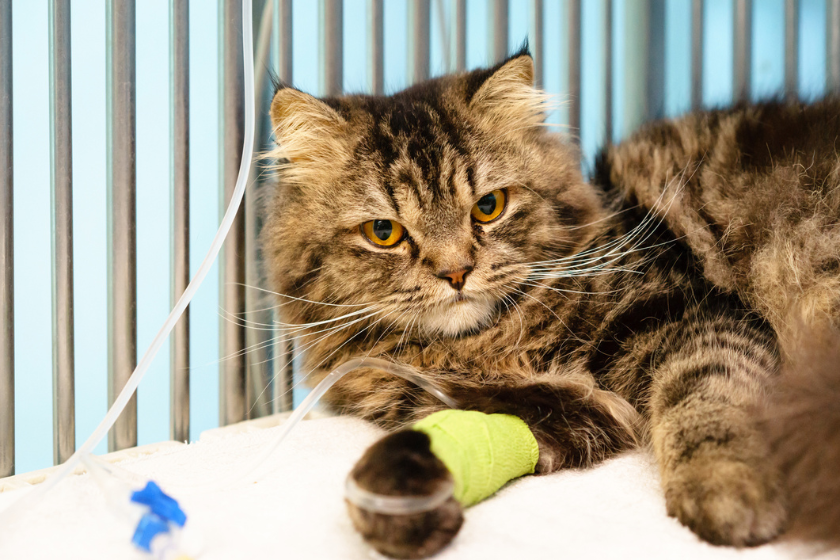
Cats have a habit of swallowing their own hair, resulting in hairball problems that causes them to throw up white foam. Some of the other symptoms include constipation and reduced appetite. Grooming is a natural part of every cat's daily life, so while this is hard to monitor, keep this in mind as a potential cause for their stomach issues.
Swallowing foreign objects can also back up the gastrointestinal tract, so watch for lack of appetite in addition to any odd behavior like vomiting. Stomach inflammation caused by a blockage may require x-rays and additional veterinary attention to assess the problem.
3. Excess Eating

If your cat is young and she does not know when to stop eating her kibble, vomiting up white foam is the best way for her to relieve herself from overeating. This is one of the less serious reason why cats throw up, so don't worry too much.
However, with all kittens and even some adult cats, if this vomiting persists or if you witness "speed" eating, then you should consider a slow feeder. Cat food could cause a blockage in their esophagus or digestive system, leading to much bigger problems.
4. Pancreatitis
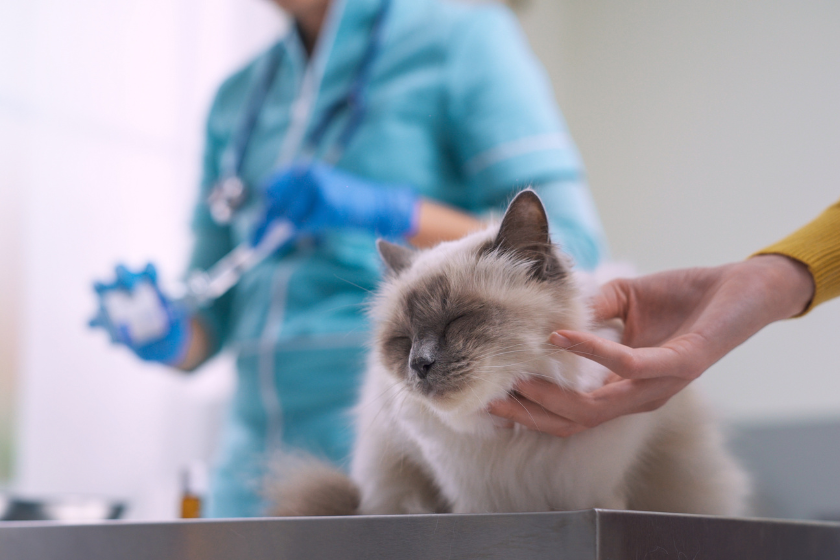
Pancreatitis is a serious medical issue that's typically accompanied by other symptoms like nausea, lethargy, and diarrhea. You usually hear about this condition around the holidays, as it can happen when your cat is fed table scraps. It can also be prevalent with other diseases, such as gastrointestinal disease, liver disease, and diabetes.
5. Parasites
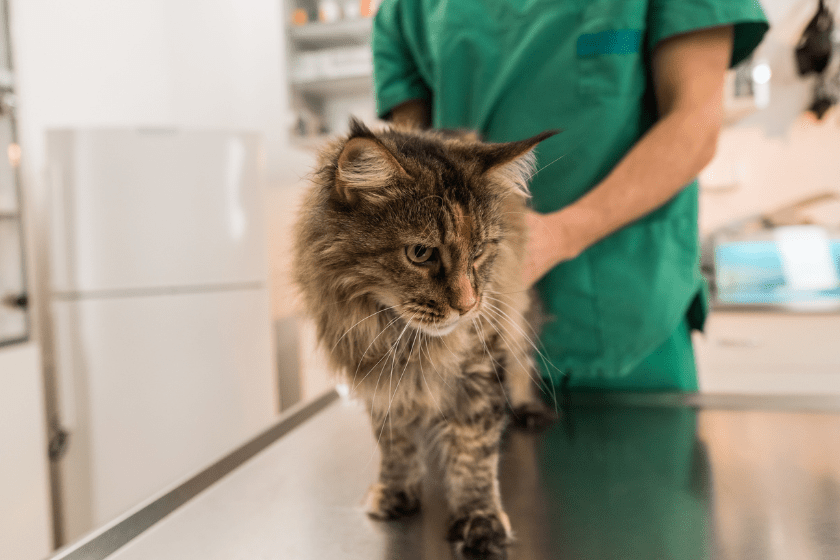
Some younger kittens haven't been dewormed before you bring them home. The combination of diarrhea and vomit consisting of white foam could be the result of a parasitic infection, which requires a stool sample to be diagnosed.
If you notice your cat's vomiting lasts more than 24 hours, make an appointment to see your vet as soon as possible. Also, a cat having diarrhea and vomiting at the same time should be considered an emergency. Don't hesitate to get your cat in their carrier and head to the emergency vet if you suspect breathing difficulties.
Always watch out for weight loss, loss of appetite, undigested food, lethargic behavior, gagging, stomach upset, and overeating, as these are all common reasons for vomiting foam. Cat owners should contact their vet if they think their cat is vomiting frequently.
Oftentimes, small meals and larger kibble might be the answer, rather than an underlying cause, and your vet will advise you on how to prevent this from happening in the future.
For medical articles, follow along at our Wide Open Pets Facebook!
This article was originally published May 23, 2022.
